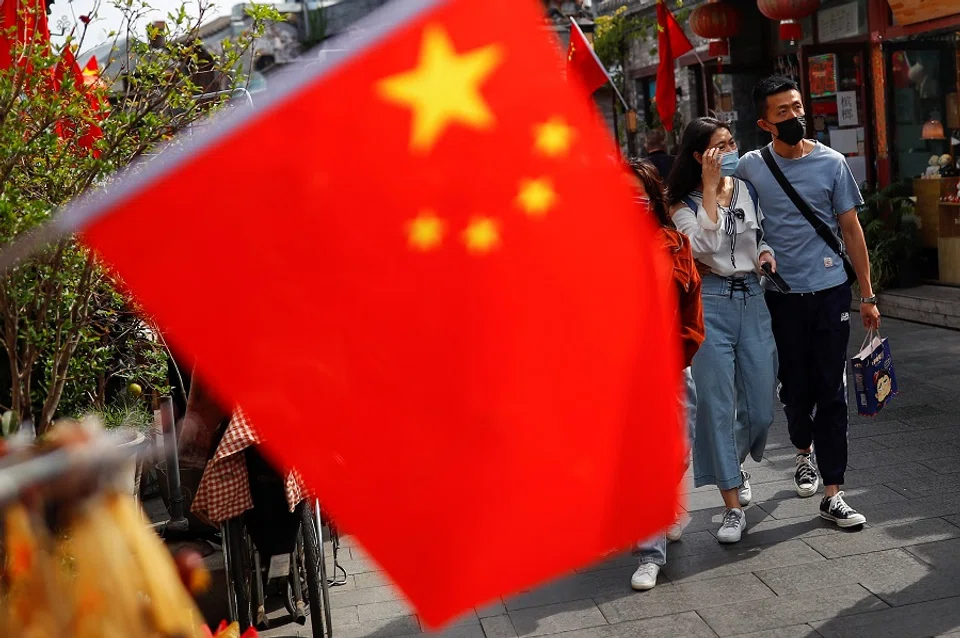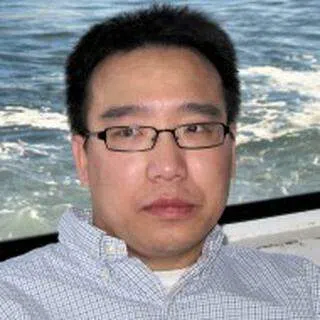The China story is not just about politics, Confucius and mooncakes
For China to spread its culture abroad successfully, the China story needs to be modernised, says Wu Guo. Ancient Chinese history and literature may be too daunting, while mooncakes and fan dances may be too superficial. People want to know what the Chinese man on the street thinks about, and what his culture of today is. Contemporary cultural products such as idol dramas and pop groups may do the trick, but so would down-to-earth insight into the lives of Chinese people. Often, just a peek into the everyday is enough to know we're all not so different after all.

In recent years, issues such as the difficulties of exporting Chinese culture, the setbacks faced by Confucius Institutes in the West, and the grand mission of spreading Chinese culture overseas, have often been discussed in the media.
I completed my undergraduate studies at Beijing Language and Culture University, which has a stellar academic faculty and a long history in teaching Chinese as a foreign language. I also have over ten years of teaching experience in the US in which I mostly taught Chinese history and supervised interdisciplinary theses on Chinese teaching, political science, and other subjects. Based on my experience, I see some practical issues involved in promoting Chinese culture in the US.
...most elementary and middle school students do not have the chance to learn Chinese because of a lack of qualified teachers.
Obstacles to learning the Chinese language
Firstly, to average Americans, the Chinese language, which uses Chinese characters (nicknamed "square-block characters"), is very different from the Indo-European languages they are familiar with. Moreover, most elementary and middle school students do not have the chance to learn Chinese because of a lack of qualified teachers. They often are only able to do so when they enter university, thus missing the optimal time to learn a foreign language.

Besides, in university, Chinese is but one out of many other modules they could take, and most undergraduates are already juggling a few other modules at the same time. This greatly limits the amount of time and energy that students can spend on the language. Furthermore, as lesson materials are generally limited to textbooks, it is extremely difficult to improve their command of the language.
In cases where students are required to write a portion of their theses in a foreign language, the writing abilities and oral skills of US students learning Chinese are far worse than their peers who are learning European languages. The latter group of students started being exposed to these languages in middle school, and some may even have a related immigrant background. Thus, they are more familiar with French, German, and Spanish than Chinese.
The transmission of high culture
In some US universities, full-time Chinese professors teach ancient Chinese culture based on their research expertise, touching on Chinese classics like the Tao Te Ching (《道德经》), the Analects (《论语》), or poems. This sort of teaching method is what I call the "refined culture" (雅文化) mode of cultural transmission. It requires the teacher to first have a profound understanding of both languages and cultures. Using two languages, he has to do extensive research and interpret the material in order to accurately pass on the essence of ancient Chinese culture and thought to students, and open their minds to a world that is very different from that with Western traditions.

Indeed, early Confucian thought and Song dynasty's Neo-Confucianism thinking on human nature, the relations of the individual with others, family and society, and on emotions and its expressions are rich and insightful; so are teachings on the ethics and political philosophy of social etiquette, norms and governance. They are all worthy of being introduced to and discussed with American students. However, this mode of instruction asks a lot of the instructor in terms of his research expertise and language proficiency.
...such representations of Chinese culture have the effect of turning traditional Chinese culture into a kind of "folk village" exhibition.
"Folk village" exhibition of Chinese culture
The other mode of cultural transmission is what I call simple Chinese and "unrefined culture" (俗文化), which relies on certain emblems of traditional Chinese culture such as pandas, chopsticks, calligraphy, traditional dance, festivities and food items like rice dumplings and mooncakes. While these subjects and activities are pretty interesting to students, an over-reliance on them without avenues of encouraging deeper reflection would perhaps result in a superficial and stereotypical understanding of traditional Chinese culture.
For example, we often see photos of female teachers wearing qipaos during certain activities or dance performances on Confucius Institute websites. But in fact, such representations of Chinese culture have the effect of turning traditional Chinese culture into a kind of "folk village" exhibition. The Western audience are constantly told that Chinese culture is very different and perhaps they equate it to Chinese stereotypes like qipaos, fan dances, and mooncakes. No wonder certain partner organisations of Confucius Institutes in American universities think that their teaching and cultural projects lack academic value.

Incidentally, such exhibitions are heavily reliant on the female figure as easily accessible cultural elements as fan dances and qipaos are all performed and worn by females, leading to a certain degree of feminisation in the representation of traditional Chinese culture overseas. On the Confucius Institute website of an American state university that directly works with Beijing Language and Culture University, I discovered that eight out of nine full-time Chinese teachers are female. Most of its students are female as well.
More examples abound: three males and 15 females were photographed at an event; during an "International Education Week" of this American university, six females in traditional Chinese costumes participated in a Chinese culture exhibition; on a flight back to China for a vacation, I bumped into a group of Confucius Institute teachers who had just completed their school term - they were all females too. Perhaps there could be more gender balance when sending Chinese teachers and volunteers abroad so that more male Chinese teachers are also able to bring their own perspectives and teaching styles to students overseas.
Lack of familiarity with contemporary culture
In actual fact, the aforementioned "refined" and "unrefined" modes of spreading Chinese culture are essentially based on tradition, and inevitably reinforces the stereotypes that American youths have of China as being very ancient and exotic. Chinese serial dramas that are more popular overseas are often period dramas set against a backdrop of palace politics, which also hark back to the past. More attention should actually be paid to contemporary culture when promoting Chinese culture overseas.
Many American youths have in fact fallen in love with South Korea and are even learning the Korean language on their own because of their exposure to Hallyu (the Korean wave) and K-pop groups like BTS. The fun, relaxed and self-expressive atmosphere of such contemporary culture, as well as the lyrics of K-pop songs, are attractive to American youths and strike a chord with them.
Learning from that experience, we have to consider if aside from organising contrived performances or folk-village events, we can promote Chinese cultural outputs that have developed on their own within China - such as dramas or idol groups.

More importantly, in contrast to China's government-funded cultural promotion efforts, K-pop groups are not only spreading Korean culture and gaining influence, but also earning the American dollar. Learning from that experience, we have to consider if aside from organising contrived performances or folk-village events, we can promote Chinese cultural outputs that have developed on their own within China - such as dramas or idol groups. Such cultural exports can attract the young people outside of China and give them a glimpse of contemporary China.
The Chinese are actually just the same as people across the world: they worry about life, but also have big dreams that they want to achieve.
Additionally, the China story should revolve more around the daily lives of ordinary people, rather than recreating or emphasising the "festival" side of culture. The people, stories, and daily lives of modern Chinese should be better integrated into China's storytelling.
When those hoping to spread Chinese culture meet American students in person, they can speak more about the stories of ordinary people to help American students understand that the real China is not just about serious or sensitive topics such as territory, ethnicity, and unification. Neither is it only about song, dance, festivals and seasonal foods. The Chinese are actually just the same as people across the world: they worry about life, but also have big dreams that they want to achieve.

Stories of modern Chinese can be weaved into Chinese language classes or modules that are taught in English. Once, I asked American students who were not learning Chinese to look up a few people in English based on the relevant backgrounds I provided. These people include Chinese poet Yu Xiuhua, Chinese lawyer Guo Jianmei, Chinese media personality Hu Shuli, Chinese entrepreneur Tao Huabi as well as other contemporary Chinese females. I also asked them to read up on the "left-behind" children in China, Chengdu's tea houses, and other social phenomena.
Cognitively speaking, this represents a shift in perspective from the "exotic" and "ancient" to dispelling myths and finding commonalities between modern people of the East and West.
I think that such readings and research can not only dispel the stereotypes that students have of traditional Chinese culture, but also rid them of the need to delve into an in-depth interpretation of ancient classics before gaining a better understanding of the culture. Instead, such research invites them into the world of most ordinary Chinese which is real and full of thoughts and aspirations.
These stories of struggle, pain, and success speak of a "China story" that is real, concrete, and has a universal appeal. Cognitively speaking, this represents a shift in perspective from the "exotic" and "ancient" to dispelling myths and finding commonalities between modern people of the East and West.
Amid the pandemic in May this year, I received an email from a final-year American political science major who took one of my modules on China's modern history in his last semester. He said that he began to respect Chinese culture more through the study and analysis of contemporary China, specific people and their life stories (including the changes in tea houses described by Professor Wang Di, the author of the book The Teahouse: Small Business, Everyday Culture, and Public Politics in Chengdu, 1900-1950).
He admitted that he came from a midwestern rural area in the US that was filled with a mythical fear of China. Now, he understands enough and is ready to share with his curious neighbours an appropriate image of China.



![[Photos] Fact versus fiction: The portrayal of WWII anti-Japanese martyrs in Taiwan](https://cassette.sphdigital.com.sg/image/thinkchina/3494f8bd481870f7c65b881fd21a3fd733f573f23232376e39c532a2c7593cbc)

